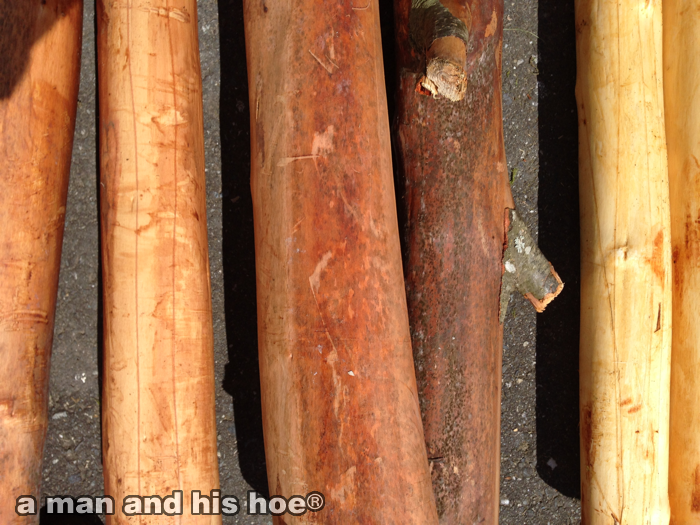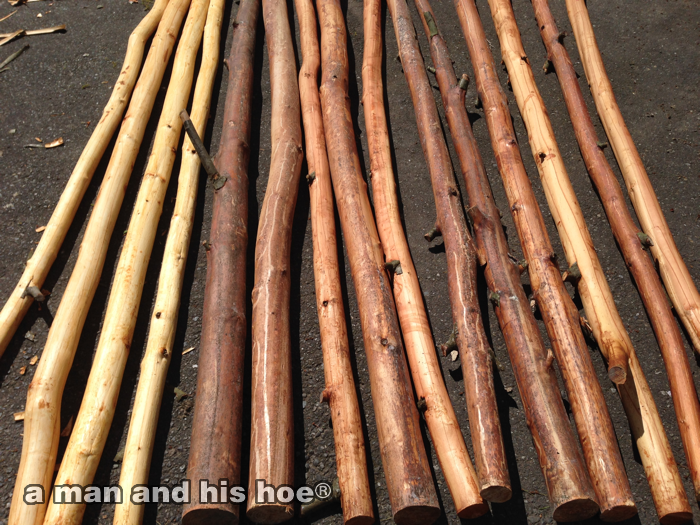These chicks are just three days old and already out in the grass and weeds. Little chicks go nuts with joy the first time their mother takes them outdoors. She had them out yesterday, on day two, in the garden. Today she is taking them further, across the driveway and along the brush of a stream.
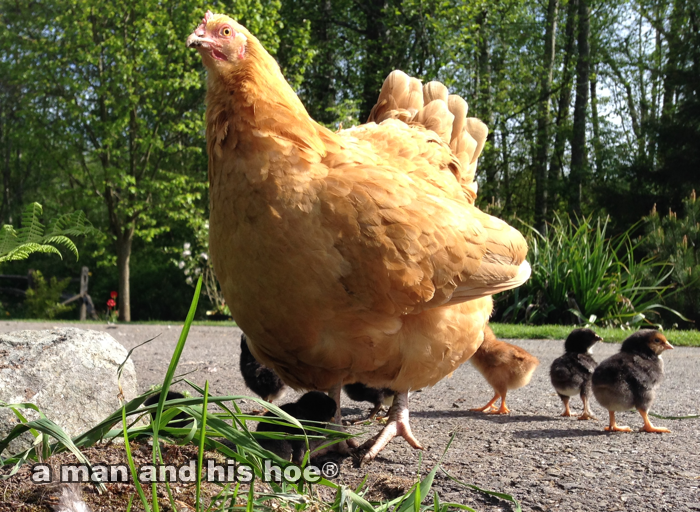
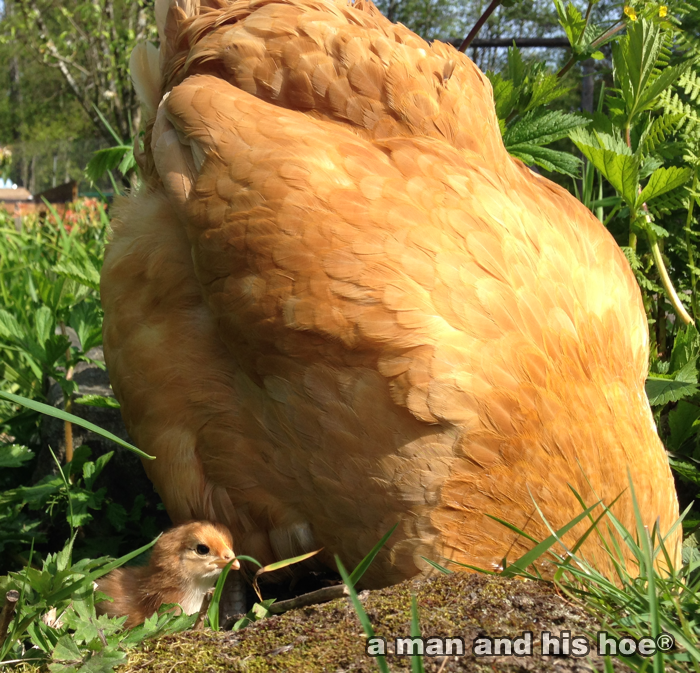


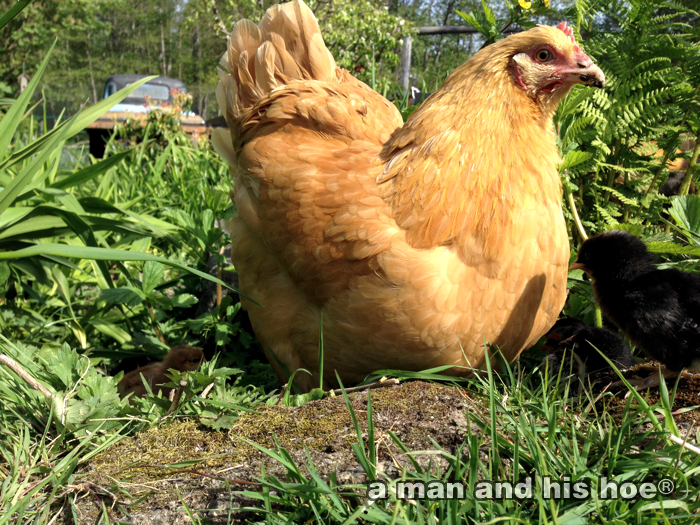
Or, they could be in a situation like this. In their short lives, the chicks in a broiler like that shown below, will travel less their whole lives, than the chicks above do every day with their mother.
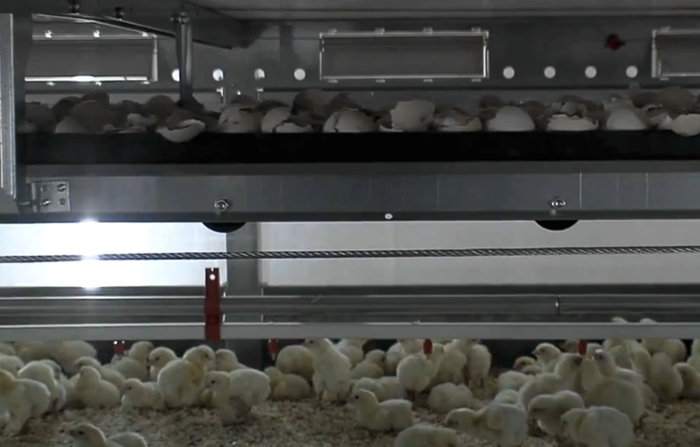
Category: About My Chickens
-
Just Three Days Old and All This Fun
-
Old Love Birds
I’ve never seen two old love birds like Billy and Imelda. They’re not exclusive, mind you. Billy continues to cavort with plenty of other hens, but Imelda has a special place in his heart. They spend a lot of time together, and this afternoon when I saw Billy standing in the doorway of one of the doghouses, I went to investigate what he was doing.

He was watching out for Imelda, who was in the doghouse to lay an egg. He hovered around her for half an hour or so.
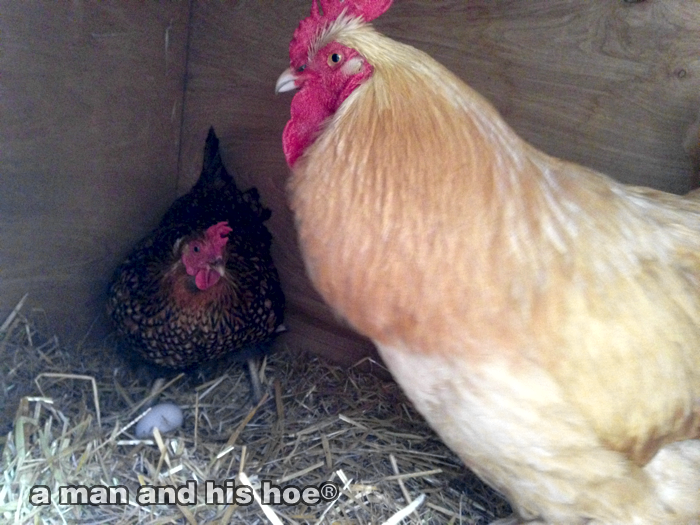
He was right next to her when she laid this egg.

And afterwards, he followed her around. The two make a touching pair. He is five years old and she is four. For chickens, they are well into middle age.
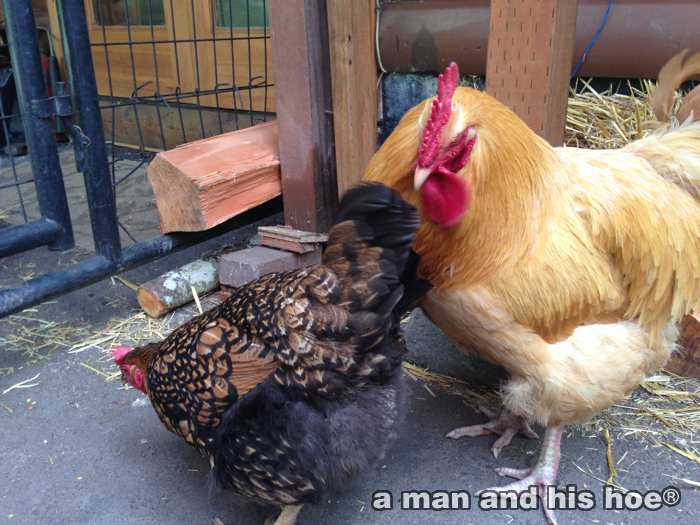
There is more going on in their tiny brains then we realize. -
Teaching Them to Feed
Chicks will grow up without a mother hen to teach them how to feed. But when they do have one, they follow her around everywhere, watching what she is doing, what she eating, how she is digging it up, and finding out what she finds especially delicious.
[wpvideo QbqTWTwC] -
They Are All Unique
How do you tell them apart? When they are this young, like these eight chicks hatched yesterday, there is one that pops out because it is a different color. The rest look the same, but if you look closely, you’ll see little differences in the coloring, the feet, the faces, and the personalities. Some stay close to their mothers. Others are more adventurous. Some are quiet, others loud.
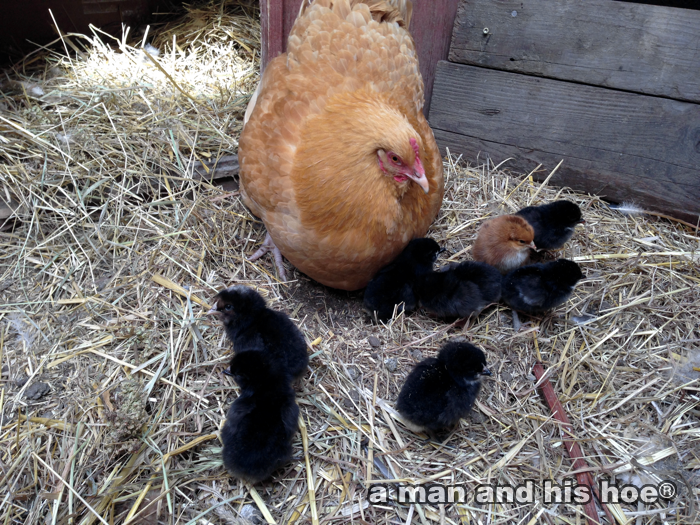
As they grow up, their differences shine. You would never mistake these two hens. Their coloring is very different, but so are their combs and wattles, their faces, and their beaks. Compare the combs on these two hens. One has floppy, rounded teeth on her comb. The other upright, pointed ones. There is an infinite variety of combs. Some flop left. Some flop right. Some both ways. Many are straight. Looking at their combs is one of the easiest ways to tell chickens apart.
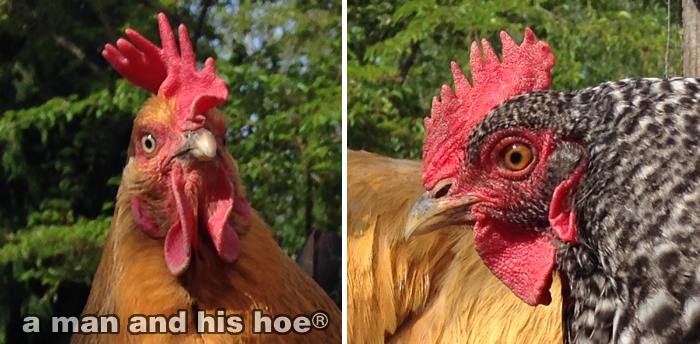
Their personalities also stand out. Stay in one place very long, and Billy and his consorts are sure to come by. You might say some roosters develop an entourage. To keep an entourage, they have to work at it. Hens won’t stick around if they aren’t being treated right.Of course, if you pack in chickens cheek to jowl, and only have hens, the dynamics change. In the wild, chickens never end up cheek to jowl. They spend as much time alone as they do with the rest of the flock. So it makes me think that chickens raised in the artificially super-packed quarters most are, must be under continuous stress, not know how to deal with having so many others around them all the time, and never having any time alone.

On a place like a man and his hoe®, chickens are not cackling all the time. But if you enter an egg laying house or poultry barn, the noise is deafening. They don’t make such continuous noise in a natural setting, so something is dreadfully wrong when they are packed in together. -
Places Chickens Love to Roam
Today is the type of day chickens dream about. The weather is nice, and there are plenty of good things to eat around the pond. On days like this, they wander far. It’s not unusual to find a hen, hidden in thick grass, a long distance from any of the other chickens.

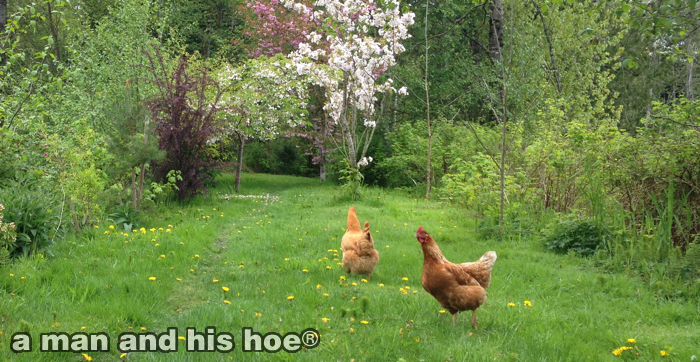
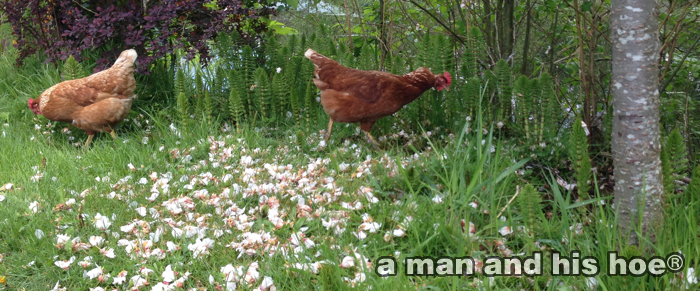
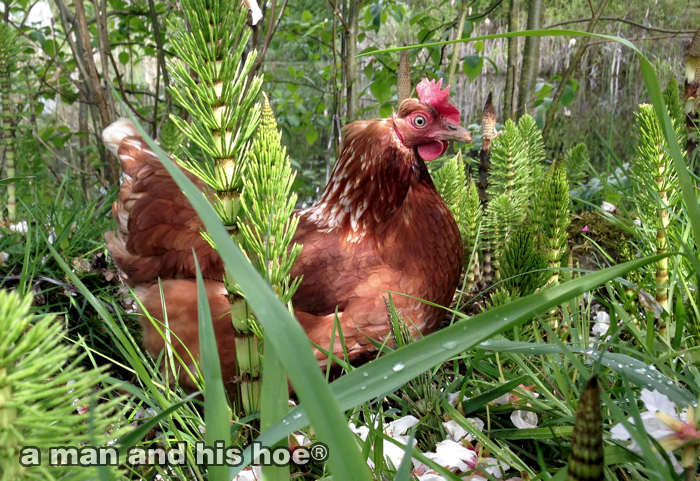
The first set of poles is done. The ones stripped last week are quite dark. Once the poles are up, they will make for a unique fence.
